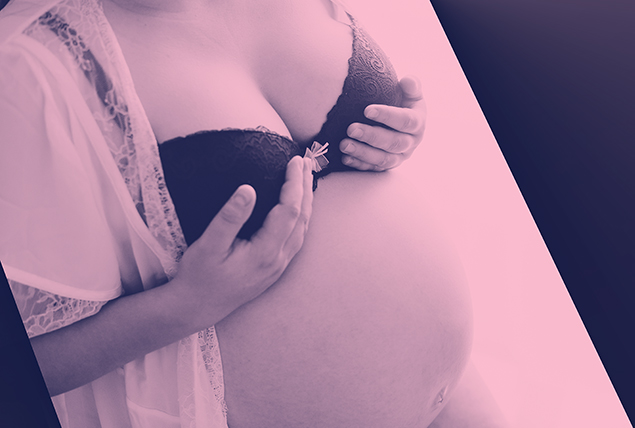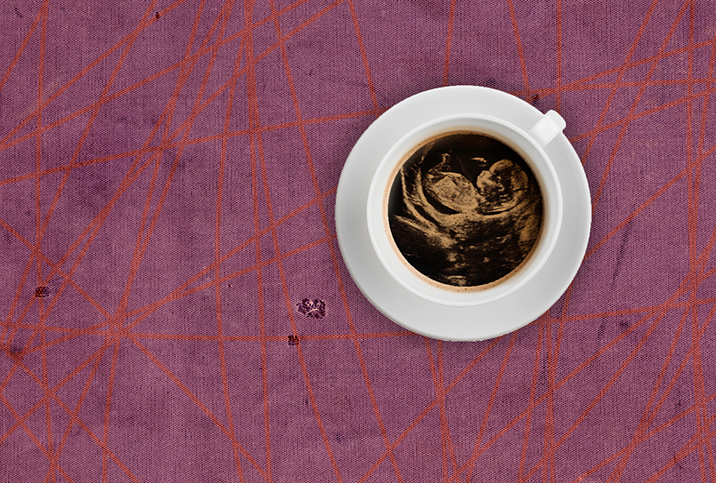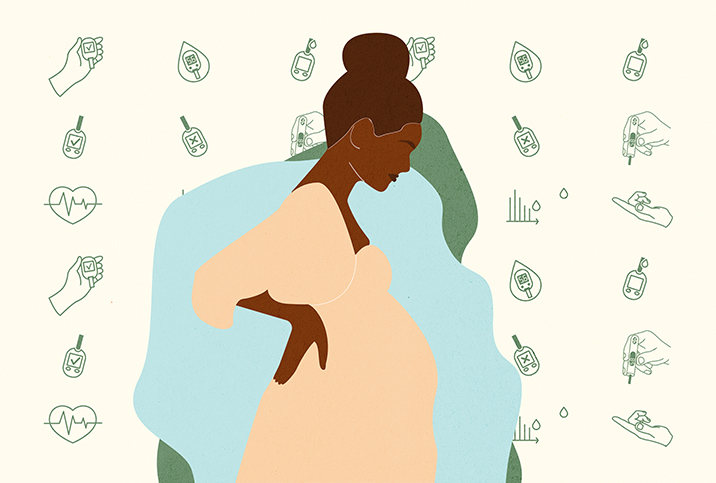What Is Gestational Gigantomastia and How Common Is It?

Key Points
- There's a difference between typical breast growth during pregnancy and atypical breast growth during pregnancy.
- Gestational gigantomastia is defined as an excessive growth of the breasts during pregnancy.
- It's unknown why gestational gigantomastia occurs, but the symptoms are obvious and it usually goes away on its own after pregnancy.
Many pregnant women experience breast growth. For some women, though, pregnancy results in far more than the typical breast changes. Gestational gigantomastia—aka breast hypertrophy and gravidic macromastia—is an excessive growth of the breasts during pregnancy.
What is gestational gigantomastia?
Gestational gigantomastia causes the breasts to become extremely large during pregnancy, big enough to potentially incapacitate the pregnant woman. These extreme changes in the breast usually start in the second trimester and can continue into the third trimester.
It can affect the size of one or both breasts. The condition is attributed to hormonal changes during pregnancy, but no one is sure why it happens. Other types of gigantomastia are due to puberty or menopause.
It is rare. Between 1989 and 2009, gestational gigantomastia occurred in 1 in 100,000 pregnancies, according to a 2015 report. It was more common from 1935 to 1960, occurring in 1 in 28,000 pregnancies.
"Gestational gigantomastia is thought to be caused by an increase in levels of hormones, such as estrogen and progesterone," said Garvit Chitkara, M.B.B.S., D.N.B., a breast surgical oncologist at Nanavati Max Institute of Cancer Care in Mumbai, India.
It can create excess breast tissue, as these hormones may foster rapid expansion.
What are the symptoms of gestational gigantomastia?
The primary symptom of gestational gigantomastia is extreme breast enlargement.
"This growth may occur gradually over several days or weeks, but it is usually rapid in onset and often asymmetrical," said Himali Maniar, M.B.B.S., an OB-GYN at Nisha Women's Hospital & IVF Centre in Ahmedabad, India.
This breast growth can be accompanied by the following symptoms in the affected region, Maniar said:
- Tenderness or pain
- Redness
- Stretched or wrinkled skin
- Tingling
- Changes to areola or nipples
- A loss of sensation over the entire area
More extreme cases can restrict breathing due to extra pressure on the chest.
How do you know if you have gestational gigantomastia?
Gigantomastia is difficult to ignore and easy to diagnose. If you're pregnant and your breasts become much larger in a short time, schedule an appointment with your healthcare provider.
"Your doctor may perform tests such as a mammogram or ultrasound to rule out other conditions and confirm a diagnosis of gestational gigantomastia," Chitkara said.
Some factors that may contribute to the development of gestational gigantomastia, according to Chitkara, include the following:
- Obesity
- Weight gain during pregnancy
- Genetics
- Smoking
- Certain medications
- Ethnicity
Recommended
- Tips for a Better Pregnancy: Pregnancy can be daunting. Here are some tips to help you make it through the long journey.
- Between the Pages—'Challenging Pregnancy': In an exclusive interview, Genevieve Grabman, a mother of twins, takes readers inside her book.
- The Mystery of Morning Sickness and Other Symptoms: Unpleasant pregnancy side effects are often your body telling you to take a minute and rest.
What size breasts are considered gestational gigantomastia?
Gigantomastia is much more than just having big boobs.
"The key characteristic of this condition is the exceptionally rapid and excessive enlargement of the breasts during pregnancy," Chitkara said.
The breasts grow three to five times their usual size. It is not a specific breast size either, as this varies between people. It can be uncomfortable and debilitating.
What is considered gestational gigantomastia? No scientific standard exists, but a 2007 report suggested breasts that carry more than an extra 1.5 kilograms (kg), or roughly 3.3 pounds, are considered to have gigantomastia.
This translates to around 3 percent of a person's body weight.
Is there a way to prevent gestational gigantomastia?
How do you keep this condition from happening to you?
"Preventing gestational gigantomastia is difficult, as the exact cause of the condition is not known," Maniar said.
Be aware of bodily changes during pregnancy. If something feels off, reach out to your doctor.
How do you treat gestational gigantomastia?
While gestational gigantomastia usually resolves following delivery, some women may require medical treatment to control the symptoms, Maniar said.
A parent could be advised not to breastfeed if the problem doesn't resolve after birth.
The treatments for gestational gigantomastia, according to Chitkara and Maniar, include the following:
- Pain relief medication
- Medication to reduce swelling
- Supportive bras
- Cold compresses for swelling
- Breast massage to reduce tenderness
- Liposuction, to remove excess fat from the area
- Breast parenchymal resection (reduction mammoplasty for breast reduction surgery)
One 30-year-old woman developed gigantomastia due to hyperprolactinemia (an excess of the prolactin hormone), according to a 2021 report. Her multidisciplinary team of an obstetrician, an anesthetist, a plastic surgeon and a pediatrician helped ensure a good outcome during her bilateral mastectomy.
A 22-year-old woman developed necrosis, or tissue death, from the pressure on her breasts. She was treated with antibiotics but refused the suggested breast reduction at the time.
Gestational gigantomastia can recur in subsequent pregnancies. A mastectomy is the only known prevention method for women who previously experienced the condition.
The bottom line
It is generally safe for breast surgery to be performed—even during pregnancy.
"With careful management, women affected by gestational gigantomastia can still have a healthy pregnancy and postpartum experience," Maniar said.
The earlier you see your doctor, the better. This can help prevent other complications, such as infection, chronic pain or problems with the pregnancy.


















